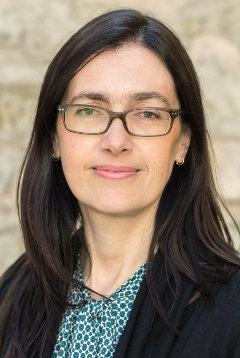To get a better feel for this from the perspective of day to day reality when it comes to trying to get wherever you want to go during morning rush hour in Tallinn, let’s have a look at a report by two Estonian researchers, – by Helen Poltimäe and Mari Jüssi, under the title . . .
Factors Affecting Choice of Travel Mode in Tallinn
Factors Affecting Choice of Travel Mode in Tallinn * Available from https://bit.ly/2xxbDZf
# # #

Morning rush hour traffic in Tallinn too.
About the authors:
 Helen Poltimäe — currently works at the School of Economics and Business Administration, University of Tartu. E
Helen Poltimäe — currently works at the School of Economics and Business Administration, University of Tartu. E
Helen does research in Environmental Economics, Passenger Transport and Welfare Economics. Their most recent publication is ‘Factors Affecting Choice of Travel Mode in Tallinn’. She can be reached at
# # #
 Mari Jüssi’s principal expertise centers on: Sustainable transport policy, urban mobility plans, carbon auditing, integrated urban planning. She worked at SEI Tallin for 20 years, from 1997-2017. Formerly a Senior Expert with the Sustainable Development Programme in Tallinn, her work at SEI included transport policy analyses, impact assessment and sustainable mobility awareness raising projects.
Mari Jüssi’s principal expertise centers on: Sustainable transport policy, urban mobility plans, carbon auditing, integrated urban planning. She worked at SEI Tallin for 20 years, from 1997-2017. Formerly a Senior Expert with the Sustainable Development Programme in Tallinn, her work at SEI included transport policy analyses, impact assessment and sustainable mobility awareness raising projects.
She is currently SUMP co-ordinator at Estonian Road Administration; Tallinn Transport Department. Preparing Tallinn’s Sustainable Urban Mobility Plan will be a 2-3 year co-operation process between Tallinn City Government, Estonian Road Administration, neighbouring municipalities, national level authorities and other stakeholders. The SUMP process in Tallinn is part-funded by Interreg FinEstSmartMobility project in close partnership with Helsinki City. Her preferred way of getting around is by bicycle.
# # #
About the editor:
Eric Britton
13, rue Pasteur. Courbevoie 92400 France
Bio: Founding editor of World Streets (1988), Eric Britton is an American political scientist, teacher, occasional consultant, and sustainability activist who has observed, learned, taught and worked on missions and advisory assignments on all continents. In the autumn of 2019, he committed his remaining life work to the challenges of aggressively countering climate change and specifically greenhouse gas emissions emanating from the mobility sector. He is not worried about running out of work. Further background and updates: @ericbritton | http://bit.ly/2Ti8LsX | #fekbritton | https://twitter.com/ericbritton | and | https://www.linkedin.com/in/ericbritton/ Contact: climate@newmobility.org) | +336 508 80787 (Also WhatApp) | Skype: newmobility.)
